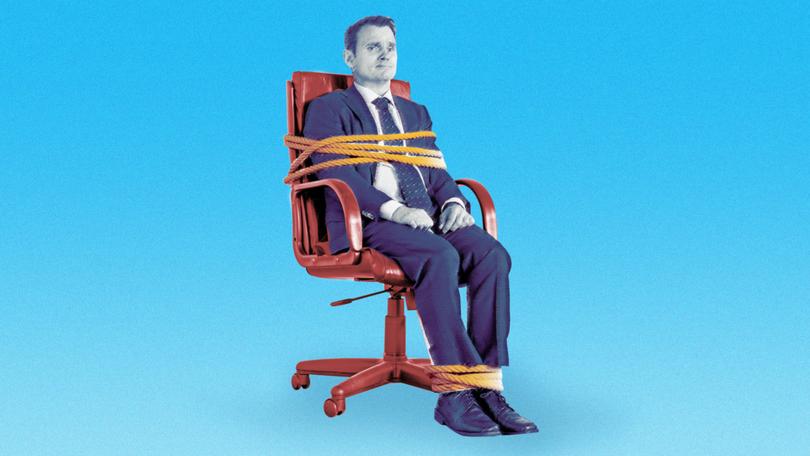THE ECONOMIST: Why it’s more important than ever for bosses to leave their desks and walk around the office

The arc of management bends towards sitting on your arse.
You may intend to get away from your desk, but it holds you there nonetheless.
There are always more emails to clear; there is always more work to get done.
Sign up to The Nightly's newsletters.
Get the first look at the digital newspaper, curated daily stories and breaking headlines delivered to your inbox.
By continuing you agree to our Terms and Privacy Policy.When you do leave your desk you are probably off to sit down somewhere else, in a meeting room.
And you will probably share that room with your closest colleagues, people who sit behind desks that are located extremely near to yours.
Domestic cats have larger territories than some bosses.
Worse, the chair’s magnetic pull is getting stronger.
The pandemic normalised video calls with people in different locations: managers can see employees around the world without leaving their perch.
Quantification is another excuse to remain sedentary.
Dashboards and data can keep bosses informed about the state of the business in real time without ever having to stand up.
The antidote to this problem is obvious but sufficiently uncommon that it has a name: management by wandering — or walking — around (MBWA).
Tom Peters, a management guru, popularised the idea in the 1980s in “In Search of Excellence”, a book he co-wrote with Robert Waterman.
He had first come across the term at Hewlett-Packard: bosses there had a habit of dropping by employees’ workstations to have informal conversations about what they were up to.
Mr Peters adopted it, arguing that managers should go to see the places and people where the real work gets done.
That case still holds, although the benefits are not guaranteed.
One reason to leave the seat of power is motivational: most employees like attention.
A study published last year by Pablo Casas-Arce of Arizona State University and his co-authors looked at the impact of short, morale-boosting visits by the new divisional manager of a Latin American bank to the 79 branches under his control.
The researchers found that the visits were associated with a boost to sales productivity that started to show up prior to the day itself, and that were biggest in higher-performing branches.
These improvements in branch performance were transitory, however, persisting for at least a few weeks before starting to fade.
And the motivational effect in this case is doubtless explained, at least in part, by the fact that the divisional manager in the study was new; big cheeses can come to seem a lot less inspirational if you see them all the time.
The more substantial benefits of MBWA come not from managers descending like minor royals, but from regular visits to the front line to identify and solve problems.
Toyota is well-known for its precept of genchi genbutsu (go and see for yourself), which encourages managers to investigate manufacturing problems in person.
Toyota bigwigs routinely undertake gemba (the real place) walks to see assembly lines for themselves and to drive home the firm’s philosophy of kaizen (continuous improvement).
This way of thinking can lead to some eye-catchingly analogue practices.
At a Toyota car plant near Derby, in Britain, lots of information is still communicated on paper; autonomous robots bearing windscreens trundle past display boards plastered with posters.
Managers there talk arrestingly about having to earn “the right to digitise”: things that can be consumed on a screen might end up being an excuse for bosses to stay away from the factory floor.
Perambulating bosses do not always lead to good outcomes.
A paper published in 2013 by Anita Tucker of Boston University and Sara Singer of Stanford University examined the implementation of an MBWA programme at 19 American hospitals.
They found that in hospitals where senior managers toured the front lines and solicited ideas for improvement, nurses on average felt that performance had actually deteriorated.
The authors hypothesise that the problems came from raised expectations: bosses asked people to identify problems and then did not do enough to actually alleviate them.
Where perceptions of performance did improve, it was because hospitals concentrated on easier-to-solve problems and because managers there took responsibility for making sure that issues were dealt with.
Wandering around, in other words, demands discipline.
Bosses are busy: doing MBWA well requires managers to make a conscious effort to leave the office and to invest time solving the problems that they see.
But in an era of Zoom calls and data analytics, there is still no substitute for shoe leather.
Originally published as Leaving the seat of power
